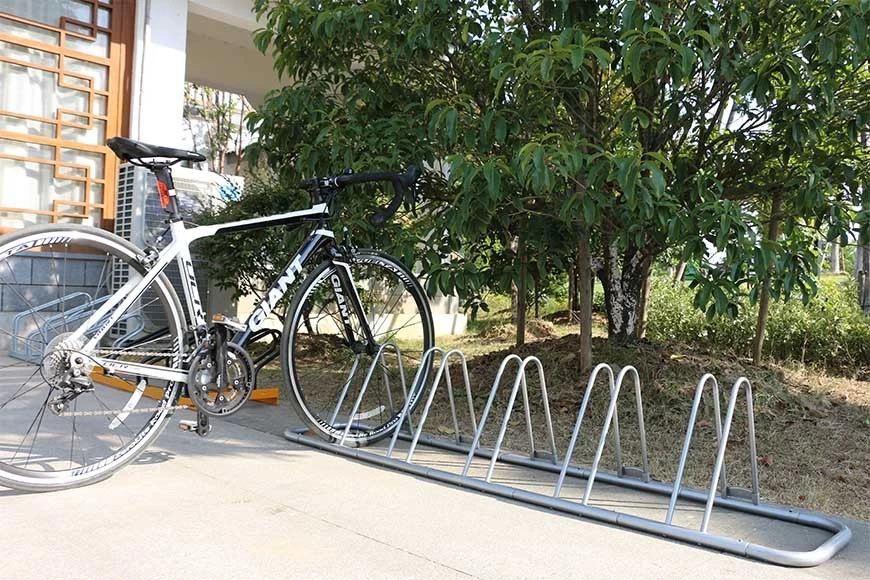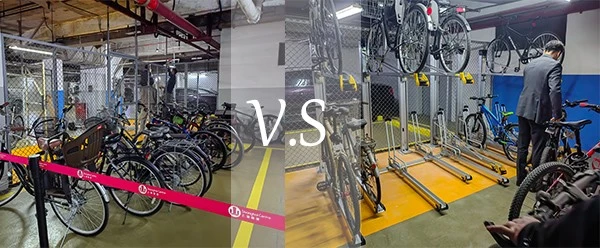Navigating China’s Smart Bike Parking Systems Like a Local
China is a land of incredible innovation, where ancient traditions blend seamlessly with cutting-edge technology. For travelers, this means a truly unique experience, especially when it comes to getting around. While exploring vibrant cities or serene landscapes, you’ll quickly discover that personal mobility in China has been revolutionized, and a big part of that revolution involves bikes. Not just any bikes, but those you can pick up and drop off almost anywhere, thanks to a robust bike-sharing ecosystem. But what happens when everyone needs to park their bikes? Enter China’s ingenious Smart Bike Parking Systems. Here at jusha.travel, we love sharing tips to make your China journey unforgettable, and understanding these systems is key to navigating urban environments like a seasoned local.
Gone are the days of haphazardly parked bikes cluttering sidewalks. China has embraced smart solutions to manage its massive bike-sharing fleet, making urban cycling not just convenient but also incredibly organized. This post will guide you through the intricacies of these systems, offering practical advice and insights to ensure your bike-sharing experience is as smooth as possible. We’ll delve into how these systems work, touch upon essential China bike-sharing apps, provide some handy Hello Bike tips, and explain the simplicity of QR code biking. By the end, you’ll be well-equipped to master urban mobility China style, even considering what China travel apps 2025 might bring!
Embracing Urban Mobility: The Rise of Smart Bike Parking

China’s urban centers have undergone a significant transformation, with bike-sharing playing a pivotal role in daily commutes and leisure rides. The sheer volume of bikes, however, presented a unique challenge: where to put them all? This led to the rapid development and implementation of advanced Smart Bike Parking Systems. These systems aren’t just about finding a spot; they’re a sophisticated network of technology designed to optimize parking, provide real-time information, and enhance the overall cycling experience. They utilize sensors, cameras, and digital interfaces to manage space, improve security, and boost efficiency, contributing significantly to sustainable urban development. This shift highlights China’s commitment to progressive urban mobility China solutions, addressing congestion and supporting eco-friendly transportation.
One of the most impressive aspects of these systems is their real-time monitoring capabilities. Equipped with sensors and cameras, they collect live data on parking space availability, occupancy, and security conditions (Exploring Innovative Bike Parking Solutions for Modern Cities). This invaluable information allows both city managers to optimize bike distribution and users to make informed decisions about where to park or retrieve their bikes. Imagine knowing exactly where an empty spot is, no matter how bustling the city, all thanks to the integration of these smart technologies into daily life.
Navigating with Apps: Your Gateway to Seamless Biking

To truly navigate China’s bike-sharing landscape like a local, your smartphone will be your best friend. The backbone of China’s bike-sharing industry lies in its highly efficient mobile applications. Among the most popular China bike-sharing apps, you’ll find services like Meituan Bike (formerly Mobike) and Hellobike (now known as Hello!). These apps are indispensable for finding available bikes, locating designated parking zones, and, crucially, understanding the smart parking systems. For instance, useful Hello Bike tips often revolve around utilizing the app’s map feature to pinpoint authorized parking areas, ensuring you avoid penalties for improper parking. The seamless digital experience offered by these platforms makes renting and parking bikes intuitive, even if you’re a newcomer to China.
The process often involves simple QR code biking. You open the app, scan the QR code on the bike, and it unlocks. When you’re done, you simply find a designated parking area and lock the bike, often confirming the parking location through the app. Some advanced systems allow users to book a spot in advance, streamlining the entire process (Exploring Innovative Bike Parking Solutions for Modern Cities). Looking ahead, we can expect future iterations of China travel apps 2025 to further integrate and optimize these features, potentially offering even more personalized routing based on traffic and parking availability. This data-driven approach to urban planning also helps authorities identify high-demand areas and optimize the distribution of bike racks, making micro-mobility more efficient and safe for everyone (Bike-sharing data and cities: lessons from China’s experience).
Beyond Surface Parking: The Innovation of Automated Systems

While many smart parking systems involve designated zones on street level, China takes innovation a step further with automated and underground parking solutions. These ingenious systems are a testament to how cities are maximizing limited urban space. Take Chengdu, for example, where a smart parking pavilion uses an LED touchscreen to send bikes up from an underground facility (Chinese city launches intelligent parking system for dockless bike …). This remarkable infrastructure can store up to 224 bikes efficiently beneath the surface, with retrieval taking less than a minute. This not only saves space but also significantly enhances security and convenience, reducing the chances of theft or damage.
These sophisticated setups are integrated into the broader network of Smart Bike Parking Systems. When using your preferred China bike-sharing apps, you’ll be directed to these high-tech hubs, just as easily as you’d find a street-level spot. It’s an exemplary demonstration of China’s commitment to solving complex urban challenges through technological prowess. As a traveler, experiencing this automated ballet of bikes rising from or descending into the ground is a fascinating insight into China’s leadership in smart city development (The Evolution of Bicycle Parking Racks: From Simple Stands to High). These systems are part of a larger push towards truly seamless urban mobility China, connecting different modes of transport and reducing reliance on private vehicles.
Tips for a Smooth Ride: Parking Etiquette and Future Trends

To ensure a hassle-free bike-sharing experience in China, a few practical tips will go a long way. Firstly, always use the designated parking facilities. Parking outside these zones can result in fines or penalties, as cities use smart monitoring to enforce parking discipline. Your China bike-sharing apps will clearly indicate where to park. Look for blue lines painted on the ground or digital signage at metro stations and major public areas, which often indicate designated parking zones or even guide you to available spots.
For those interested in electric bikes, remember that many smart parking zones, especially near commercial complexes, now include E-bike charging stations. These racks come with built-in charging points, a boon for longer rides or if you prefer an electric assist. As we look towards China travel apps 2025, expect even more integrated services, potentially including localized deals, cultural insights tied to your cycling route, and enhanced multilingual support. The foresight in developing these comprehensive Smart Bike Parking Systems not only benefits locals but also significantly improves the travel experience for visitors, making QR code biking a ubiquitous and convenient part of Chinese urban life. This efficient infrastructure supports carbon emission reduction targets and helps alleviate traffic congestion, emphasizing sustainable development as a core component of urban mobility China.
Conclusion
Navigating China’s urban landscape by bike offers an unparalleled sense of freedom and a unique perspective on daily life. Thanks to continuous innovation in Smart Bike Parking Systems, this experience is more organized and enjoyable than ever before. From the intuitive China bike-sharing apps that guide you to available bikes and parking, to the simple act of QR code biking, and the advanced automated parking solutions, China has truly set a benchmark in urban mobility China.
Embrace the challenge, download your preferred app (like Hello!), and discover the cities at your own pace. With a little preparation and these tips, you’ll be maneuvering through China’s smart bike ecosystem like a seasoned local. For more insights into planning your perfect trip, including what to expect from China travel apps 2025 and beyond, keep exploring jusha.travel. We’re here to help you unlock the wonders of China, one pedal stroke at a time!
Have you used China’s smart bike parking systems? Share your experiences and any additional Hello Bike tips in the comments below! Don’t forget to visit jusha.travel for more inspiring content and practical advice for your next adventure in China!

